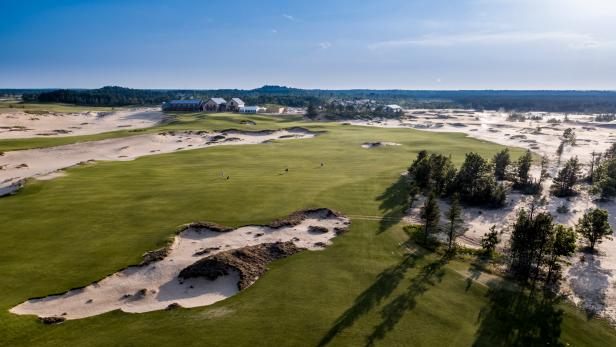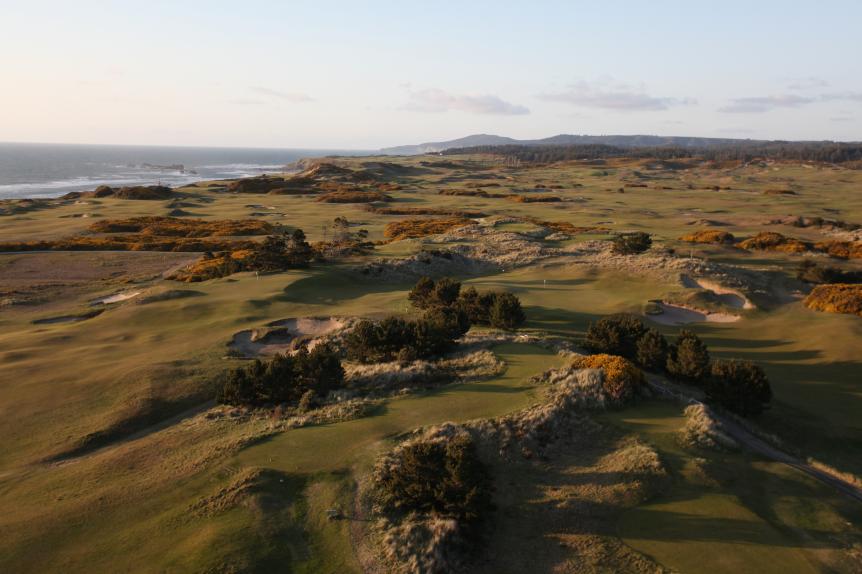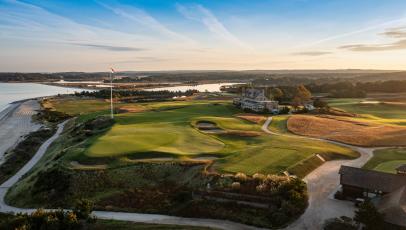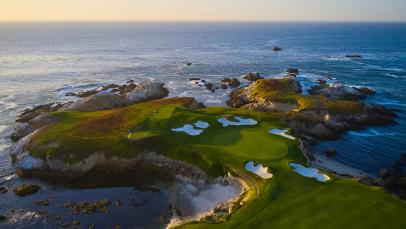Bandon Dunes’ architect reveals the secrets about making a great course – Australian Golf Digest

- by Admin
- August 7, 2024

Architect David McLay Kidd is well-suited to take on our latest “Ask An Architect” question. The Scotsman burst into the profession when he built the first course at Bandon Dunes for developer Mike Keiser in the late 1990s.
Over the course of his career he’s had his share of other great sites like Gamble Sands in Washington, Mammoth Dunes at Sand Valley and, most recently, GrayBull in the sand hills of Nebraska, opened this summer. He’s also had his share of less than stellar sites like The Castle Course in St. Andrews and Tributary in Idaho.
More from Golf Digest Golf Digest Logo The best golf courses in Scotland
Q: I want to ask you about the correlation of great natural sites to great courses, but first, how do you define a great site? What are the characteristics in your mind?
Kidd: The first thing that jumps to mind is sand. If the site doesn’t have sand, it becomes more difficult to build regardless of any other issue. It might be the most compelling landscape on planet earth but if it’s covered in rock, it’s going to be expensive and difficult to build.
 Stephen Szurlej Public Bandon Dunes Bandon, OR, United States 4.7 362 Panelists
Stephen Szurlej Public Bandon Dunes Bandon, OR, United States 4.7 362 Panelists
- 100 Greatest
- 100 Greatest Public
- Best In State
Chicago recycled-products mogul Mike Keiser took a gamble when he chose then-tenderfoot architect David McLay Kidd to design a destination daily fee on the remote southwestern coastline of Oregon. But the design Kidd produced, faithful to the links-golf tenets of his native Scotland, proved so popular that today Keiser has a multiple-course resort at Bandon Dunes that rivals Pinehurst and the Monterey Peninsula—or perhaps exceeds them given that all fve Bandon courses are ranked on our 200 Greatest, four in the top 100. None of that would have happened if McLay Kidd hadn’t produced a great first design that drew golfers into its orbit. View Course
Sand is like the perfect ingredient for golf, the elixir of life for a golf course architect. If you can have sand and then also a compelling landscape around it, that would be the double whammy, the perfect scenario. Think of all the courses that are in your America’s 100 Greatest Courses list that are sand in a compelling landscape, regardless of if they’re on the beach or not. There are plenty of top 100s that are in sand but are not on the beach. The entire Mornington Peninsula in Australia (the courses around Melbourne)—none of those courses are on the beach, yet they’re all in compelling landscapes in sand. Muirfield in Scotland is not on the beach but is in sand.
GrayBull in Nebraska…holy sh*t. In my entire career I’ve never worked on a site where it was that easy to build a golf course. The topography was better than perfect. Sand everywhere. There were no impediments. I was just dreaming golf. There were a thousand options for every hole, and you just had to pick one. And I guarantee you the one you pick was going to be good. Could it be better? Maybe. Could it be worse? Probably not.
That’s the genius of Bill Coore, in particular. He’s spent almost his whole career being patient and willing to wait until he gets a great sand site in a compelling landscape. I’m patient, but not entirely that patient.
More from Golf Digest  Golf Digest Logo World’s 100 Greatest Golf Courses
Golf Digest Logo World’s 100 Greatest Golf Courses
Q: So, given that standard, how important is a great site to creating great architecture?
Kidd: Essential. If it’s not sand, and if it’s not a compelling landscape, almost no amount of money can overcome it, though there are outliers. If you can start with a perfect site—sand in a compelling landscape—you’re already starting with an eight or a nine. You should be able to build at least an equal golf course.
Now, having said that, the true measure of a golf course architect should probably be the margin between the site he started with and the golf course he created. Kyle Phillips at Kingsbarns started with a mediocre site and built an out of the box, raging roller coaster of a golf course. He started with a four and he built a nine. David Kidd took a nine out of ten site at Bandon Dunes and built a nine out of 10 golf course.
More from Golf Digest  Links-Like The best links courses in the U.S. (or at least ones that look the part)
Links-Like The best links courses in the U.S. (or at least ones that look the part)
Tributary, conversely, was absolutely flat as a board, and it barely drained. It was heavy soil. Pasture. Rock underneath. But—in a compelling landscape with views of the Tetons around it. That was a two site, and the question was whether I could turn it into a seven or an eight. I’ll let others decide.
When I played Shadow Creek, which I’ve only played once, I just saw it as a master class in imagination. It was unbelievable. The imagination to do cuts on top of cuts on top of cuts—it is so multidimensional. They cut down (into the desert) to create a fairway, and then continued to cut to a lake, and then continued to cut to build a stream that runs out of the lake. The layers upon layers of design at Shadow Creek just blew my mind.
It’s not for everyone, but if you’re an architectural geek it’s definitely worth exploring and trying to wrap your mind around what it was Tom Fazio and his team managed to achieve starting with a less than zero site, the ultimate in sh***y sites. There was nothing there. So sand is essential, but there are outliers.
More From Golf Digest  Golf Digest Logo America’s 100 Greatest Golf Holes
Golf Digest Logo America’s 100 Greatest Golf Holes
• • •
Explore Golf Digest’s new Course Reviews section where you can submit a star rating and evaluation on all the courses you’ve played. We’ve collected tens of thousands of reviews from our course-ranking panelists to deliver a premium experience, which includes course rankings, experts’ opinions, bonus course photography, videos and much more. Check it out here!
This article was originally published on golfdigest.com
The Latest News
-
January 10, 2025‘They can say what they want’: Smith excited with Test captaincy return
-
January 10, 2025Eye-watering record cash prize Australian Open winner will win
-
January 10, 2025UK seaside town leaves Australian tourist completely baffled
-
January 10, 2025Kyrgios steps up Australian Open preparation in a positive sign
-
January 10, 2025Watch Hideki Matsuyama (unintentionally!) hit his ball through an 8-inch gap in palm trees – Australian Golf Digest





